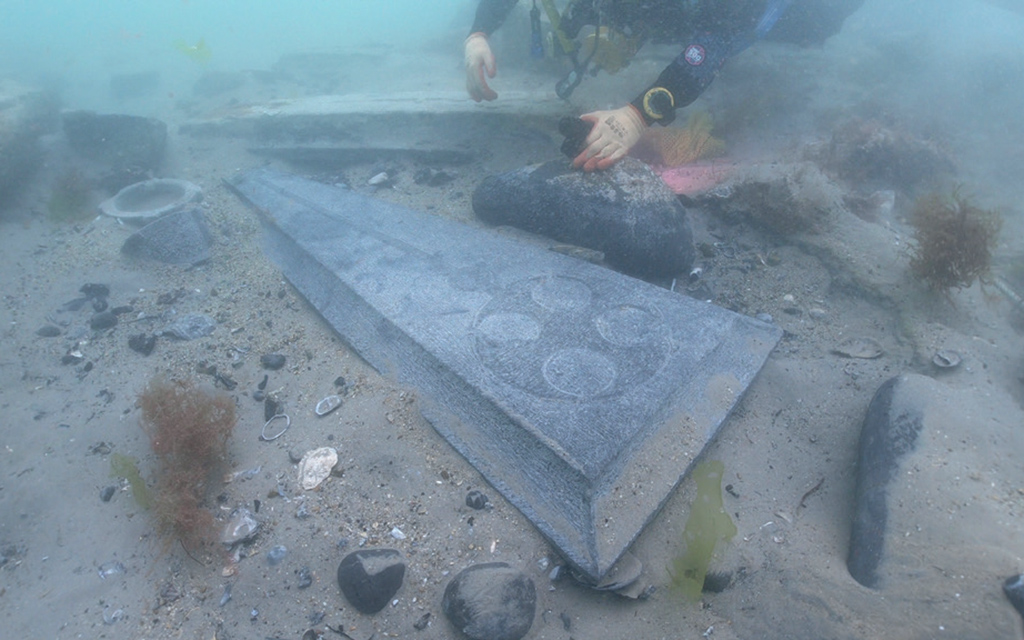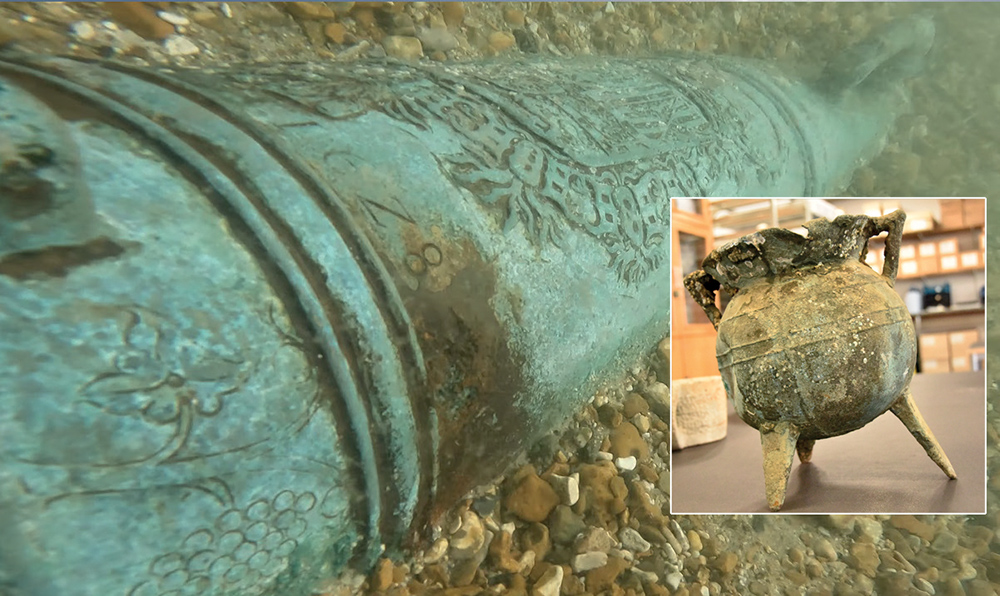
Three ‘exceptionally rare’ shipwrecks off the Dorset Coast and the Isle of Wight have been granted the highest level of protection on the advice of Historic England.
The 13th century Mortar Wreck, discovered off the Dorset coast with its cargo of gothic Purbeck stone gravestones, is now the oldest known protected wreck in English waters, with timbers dating from 1242-1265, during the reign of King Henry III.
Finds recovered from the Mortar Wreck includes two Purbeck stone gravestone slabs from Dorset, with two different gothic designs. They are in immaculate condition and the chisel marks can still be seen. Similar gravestones are found in church graveyards across the South Coast. They are significant because they were pre-carved and are not blank slabs, suggesting a demand for highly skilled stonemasons and their products.
Other finds include a large cauldron for cooking soup, a smaller cauldron, which would have once had a long handle for heating water and mugs covered in marine concretion.
The gravestone slabs would have either been carved at the quarries or at a workshop and are unpolished. One of the slabs features a wheel headed cross, an early 13th Century style, while the other depicts a splayed arm cross, common in the mid-13th century. Several Purbeck stone mortars used by millers to grind grains into flour have also been recovered.

Cannon on the NW68 wreck and [inset] a cauldron from the Mortar Wreck
The 16th and 17th century Shingles Bank Wreck sites (designated as NW96 and NW68) off the Isle of Wight have revealed cannons and lead ingots and have shed more light on trading at the time. The NW68 wreck may have been associated with the Battle of Portland in 1653, when the fleet of the Commonwealth of England was attacked by the Dutch Republic during the First Anglo-Dutch War (1652-1654). Wreck site NW96 is believed to be the remains of an armed merchant ship.
The Shingles Bank in the Needles Channel is a well-known navigational hazard for ships entering the Solent from the west. It is thought that both NW96 and NW68 became stranded on the banks before sinking. Archaeological remains of these vessels include several cannons, a large anchor, at least 50 very large lead ingots with unidentified markings and stone cannonballs. The ingots are a fixed size and weight – they would have been used as currency for trade – so they could be made into a variety of products.
The finds are being investigated by archaeologists from the Maritime Archaeology Trust and Wessex Archaeology, along with the finders, BSAC Divers Martin Pritchard and Dave Fox. SCUBA will report in their ongoing project in a forthcoming issue.
With the addition of these three sites, there are now 57 Protected Wreck Sites in English waters. Their status means that divers need a special license administered by Historic England on behalf of the Department for Digital, Culture, Media and Sport to dive the wrecks. Their artefacts are protected and their condition is carefully monitored.



